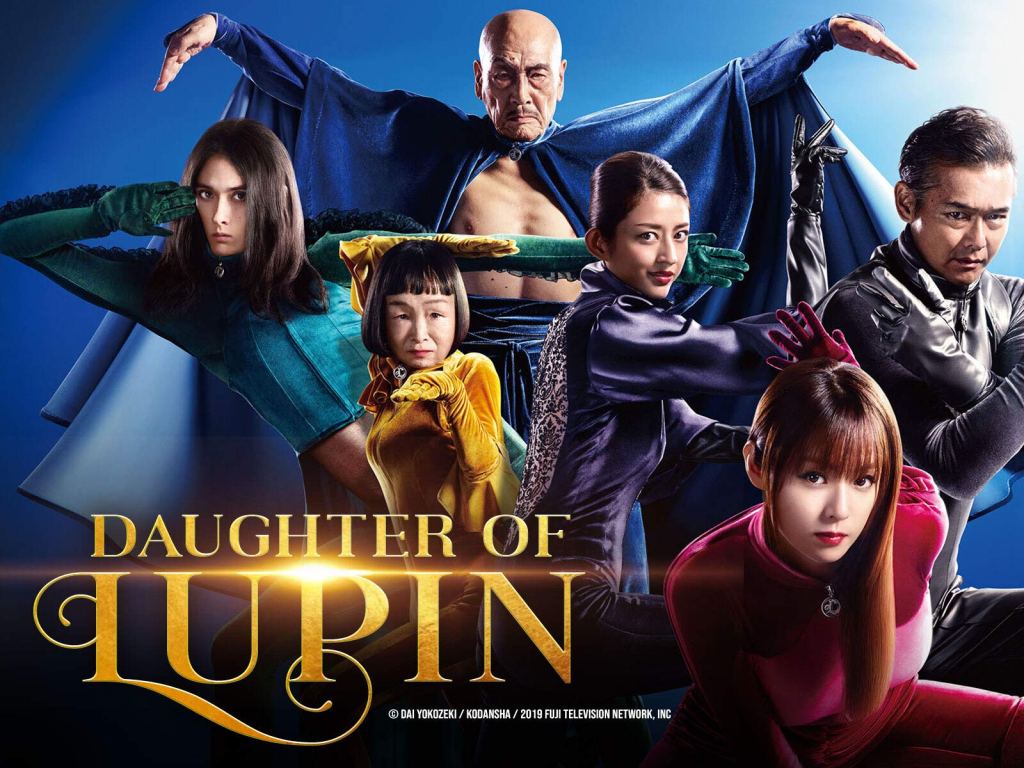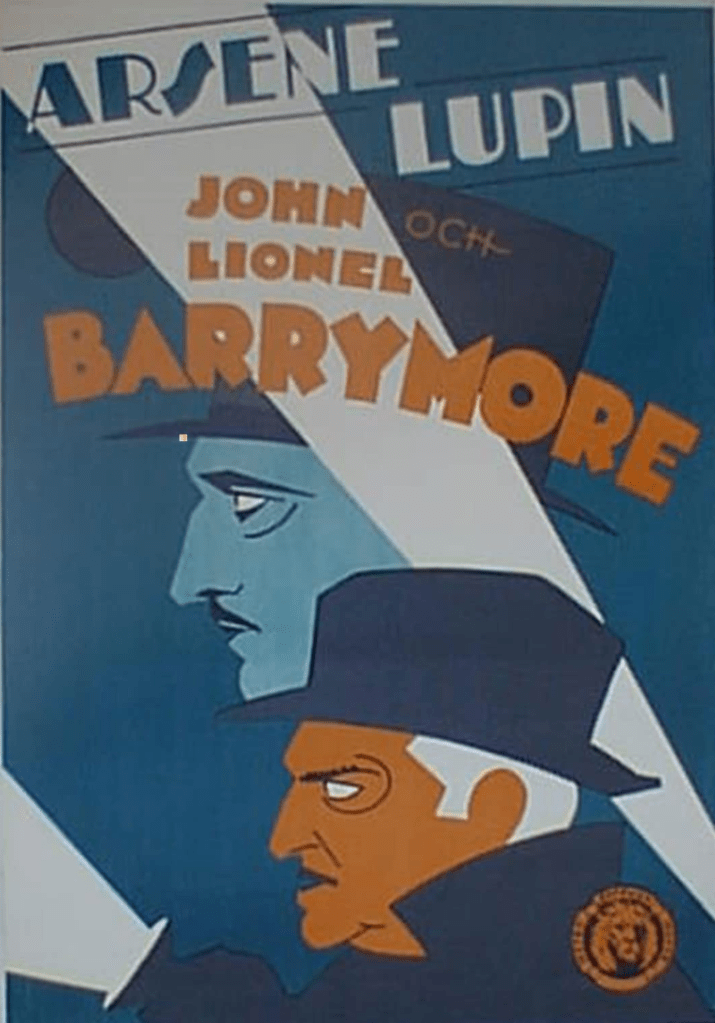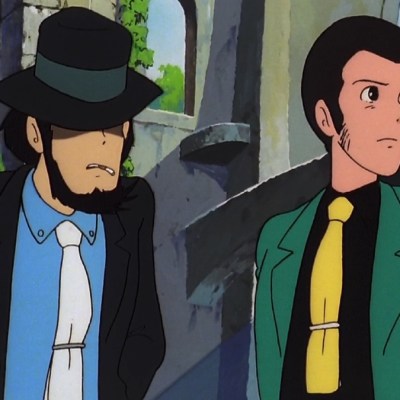When Netflix premiered the first season of Lupin last January, 70 million sheltered-in-place households ravenously binged it, making the series the most-watched non-English show for its premiere month on the streamer so far. Lupin steals a page from French literature. The hero of Lupin, Assane Diop (Omar Sy) is inspired by France’s iconic ‘Gentleman Thief’ Arsène Lupin, a fictional figure created by French writer Maurice Leblanc in 1905.
Lupin was the subject of some two dozen books by Leblanc, who continued adding into his literary franchise until well into the 1930s. Akin to Robin Hood, Lupin stole from the rich, and often did good deeds despite his thieving capers. He was a master of deception and disguise, a lady killer who always operated with a classy panache. With a legacy spanning more than a century, there have been plenty of live-action depictions in film and TV.
The First Lupin Films are Over a Hundred Years Old
The earliest cinematic portrayals of Lupin were in black and white, and many have been lost. One of the very first was a U.S. production, a short film titled The Gentleman Burglar in 1908. William Ranows, a veteran of over sixty films, played Lupin. It was directed by one of the first film directors ever, Edwin Porter, who worked for Edison.
Leblanc was a contemporary of Sir Arthur Conan Doyle, the creator of Sherlock Holmes. Consequently, Holmes appears in a few Lupin stories. Doyle took legal action against Leblanc, forcing the name change in Lupin stories to the thinly disguised ‘Herlock Sholmes.’ As Holmes is loved by the British, Lupin is cherished by the French, and both characters became global icons. Consequently, among the many film and TV adaptations, several that depicted their rivalry regardless of copyright issues. In 1910, a German film serial titled Arsène Lupin contra Sherlock Holmes starred Paul Otto as Lupin and Viggo Larsen as Holmes (Larsen also served as director.) There were allegedly five installments in the series, but they’ve all been lost.
France produced Arsène Lupin contre Ganimard in 1914 with Georges Tréville as Lupin (Inspector Ganimard was constantly on Lupin’s trail). The silent film Arsène Lupin came out of Britain in 1916 with Gerald Ames in the titular role, followed by more U.S. productions: Arsène Lupin (1917) starring Earle Williams, The Teeth of the Tiger (1919) with David Powell, which is also lost, and 813 starring Wedgwood Nowell. 813 was the title of Leblanc’s fourth Lupin book.
Lupin and the Barrymore Clan of Actors
The legendary thespian John Barrymore played Lupin in 1932’s Arsène Lupin. He took on the role under one of Lupin’s aliases, the Duke of Charmerace. His brother, Lionel Barrymore, played another Lupin nemesis, Detective Guerchard. Given the illustrious cast, this is a standout Lupin film, although there isn’t a shred of Frenchness in Barrymore’s interpretation. Coincidentally, John Barrymore also played Holmes in Sherlock Holmes a decade earlier. He is also the grandfather of Drew Barrymore.
Barrymore’s Arsène Lupin revolved around the theft of the Mona Lisa from the Louvre. Historically, the Da Vinci masterpiece was stolen in 1911 and recovered in 1913. This inspired a Lupin short story, a parody akin to early fanfiction that was not written by Leblanc. In 1912, mystery writer Carolyn Wells published The Adventure Of The Mona Lisa which imagined Holmes and Lupin to be part of the International Society of Infallible Detectives alongside A. J. Raffles, Monsieur Lecoq, and other crime-solving luminaries. Barrymore’s Arsène Lupin does not retell this tale, but the theft of the Mona Lisa comes up again in other Lupin films because it’s France so robbing the Louvre is a common plot point. Netflix’s Lupin begins with Diop’s heist of the Queen’s necklace from the Louvre, an Easter egg referring to Leblanc’s original Lupin short story, ‘The Queen’s Necklace’ published in 1906.
The ‘30s delivered two more Lupin films. The French-made Arsène Lupin detective (1937) starred Jules Berry as Lupin and the American-made Arsène Lupin Returns (1938) with Melvyn Douglas who was credited under another Lupin alias Rene Farrand (Lupin has a lot of aliases). Despite being a completely different production, Douglas’ film was an attempt to capitalize on the success of Barrymore’s film as both films were from MGM. Universal Studios entered the fray soon after with their version Enter Arsène Lupin (1944) starring Charles Korvin. The following year, the Mexican-made Arsenio Lupin (1945) featured Ramón Pereda as the French thief. That film also starred José Baviera as Sherlock.
The Early Japanese Lupin Adaptations
Lupin captured the hearts of the Japanese. Ironically, Japanese speakers have a difficult time pronouncing ‘L’s so Lupin is usually renamed as ‘Rupan’ or ‘Wolf’ (Lupine means wolf-like – remember Remus Lupin from Harry Potter). As early as 1923, Japan also delivered a silent version of 813, retitled Hachi Ichi San, starring Komei Minami as the renamed Lupin character of Akira Naruse.
In the ‘50s, Japan produced 3 films that credit Leblanc: Nanatsu-no Houseki (1950) with Keiji Sada, Tora no-Kiba (1951) with Ken Uehara, and Kao-no Nai Otoko (1955) with Eiji Okada. However, post-WWII Japan has obscured most of the details on these films. Like Hachi Ichi San, these Japanese versions laid the foundations for the Lupin III, which debuted as a manga in 1967 and spawned a major manga and anime franchise. In karmic retribution for Leblanc poaching Sherlock, Japan stole Lupin. Lupin III was Arsène Lupin’s grandson.

Notably, the second Lupin III feature film, The Castle of Cagliostro, marked the directorial debut of famed animator Hayao Miyazaki and is considered a groundbreaking classic that inspired Pixar and Disney (Disney’s The Great Mouse Detective (1986) pilfered the finale clockwork fight from The Castle of Cagliostro). In the wake of the anime Lupin III Part I (1971), Japan produced some anime films that were more loyal to Leblanc, notably Kaitō Lupin: 813 no Nazo (1979) and Lupin tai Holmes (1981). However, this article is focused upon live-action adaptations. Lupin III is another topic entirely.
In the late ‘50s and into the ‘70s, France reclaimed her celebrated son. Robert Lamoureux became Lupin for two films, Les aventures d’Arsène Lupin (1957) and Signé Arsène Lupin (1959). A comedy version pitted rival sons of Lupin against each other in Arsène Lupin contre Arsène Lupin (1962). Playing the Lupin brothers were Jean-Pierre Cassel and Jean-Claude Brialy.
Lupin on the Small Screen
Read more
France also delivered several TV series. Arsène Lupin ran from 1971 to 1974 and starred Georges Descrières. It encompassed 26 60-minute episodes. L’Île aux trente cercueils (1979) is often included in Lupin filmographies because it is based on a Leblanc novel published in 1919 in which Lupin makes a guest appearance. However, he was omitted from this six-episode miniseries, so it doesn’t quite count. Arsène Lupin joue et perd (1980) was another six-episode miniseries loosely based on ‘813’ with Jean-Claude Brialy from the 1962 comedy.
One more French TV show, Le Retour d’Arsène Lupin, was televised in two seasons, 1989-1990 and 1995-1996. These were 90-minute episodes with 12 in season 1 and eight in season 2. François Dunoyer starred as Lupin.
And in 2007, the largest Lupin TV show ran for a whopping 96 episodes plus one special. Lupin was made in the Philippines no less, starring Richard Gutierrez as André Lupin
Lupin in the Last Decade
In 2011, Japan delivered one more live-action film Lupin no Kiganjo starring Kōichi Yamadera. Based on Leblanc’s 3rd Lupin book, L’aiguille Creuse, the film is reset in modern Japan.

In the strangest permutation of Japanese Lupins, Daughter of Lupin was a TV series that is an odd hybrid of Lupin III and Leblanc’s work. A campy sitcom in the tradition of Romeo and Juliet, Hana (Kyoko Fukada) comes from a family of thieves known as the L clan who are inspired by Lupin. Her lover, Kazuma (Koji Seto), is from a family of cops. When in thief mode, Hana wears a carnival mask and a velvet catsuit. It’s goofy, sort of a live action version of anime. It ran for two seasons in 2019 and 2020.
The Lupin Adaptation You Should See
The strongest modern adaptation of Leblanc’s iconic burglar is the period film Arsène Lupin (2004). It’s an actioner, a creation story for Lupin, starting from his childhood and moving rapidly to him becoming a master gentleman thief. Romain Duris plays the titular role, and the film is in French. Backing Duris are veteran actresses Kristin Scott Thomas as Comtesse de Cagliostro and Eva Green as Clarisse de Dreux-Soubise. The story is absurd, like a mash-up between a superhero film and the DaVinci code, and it gets a bit muddled in the telling. However, it’s shot on location (including the Louvre) and encapsulates the spirit of Leblanc’s character in an updated fashion. It’s a perfect primer for Lupin Season 2.
Lupin seasons 1 and 2 are available to stream on Netflix now.

